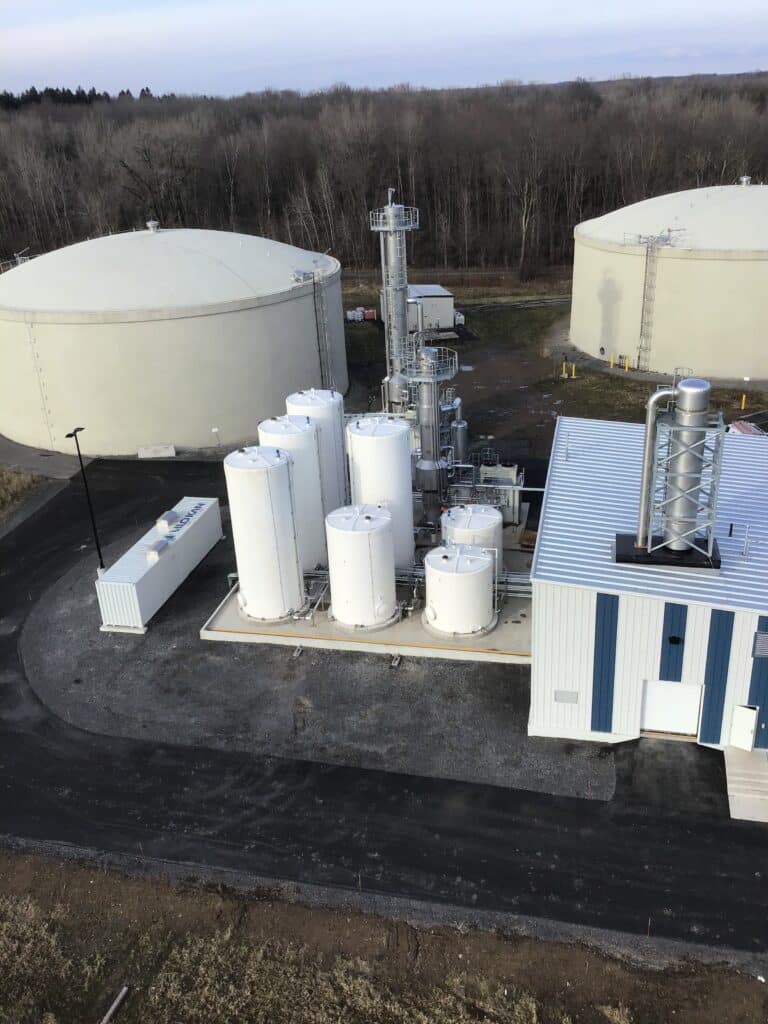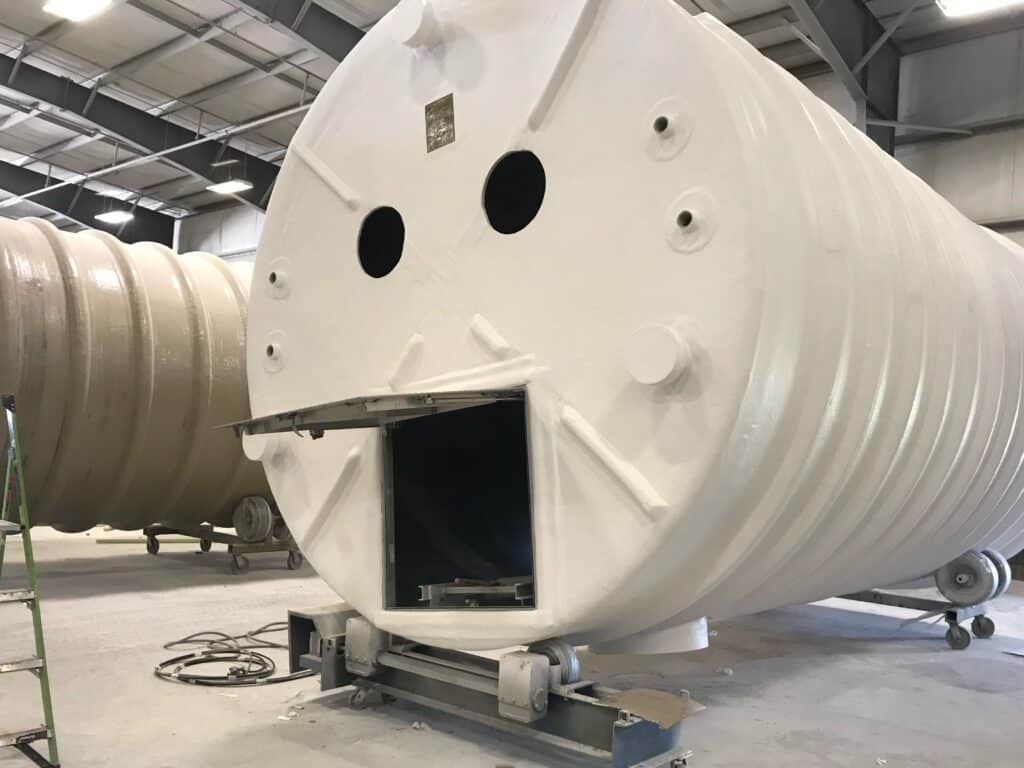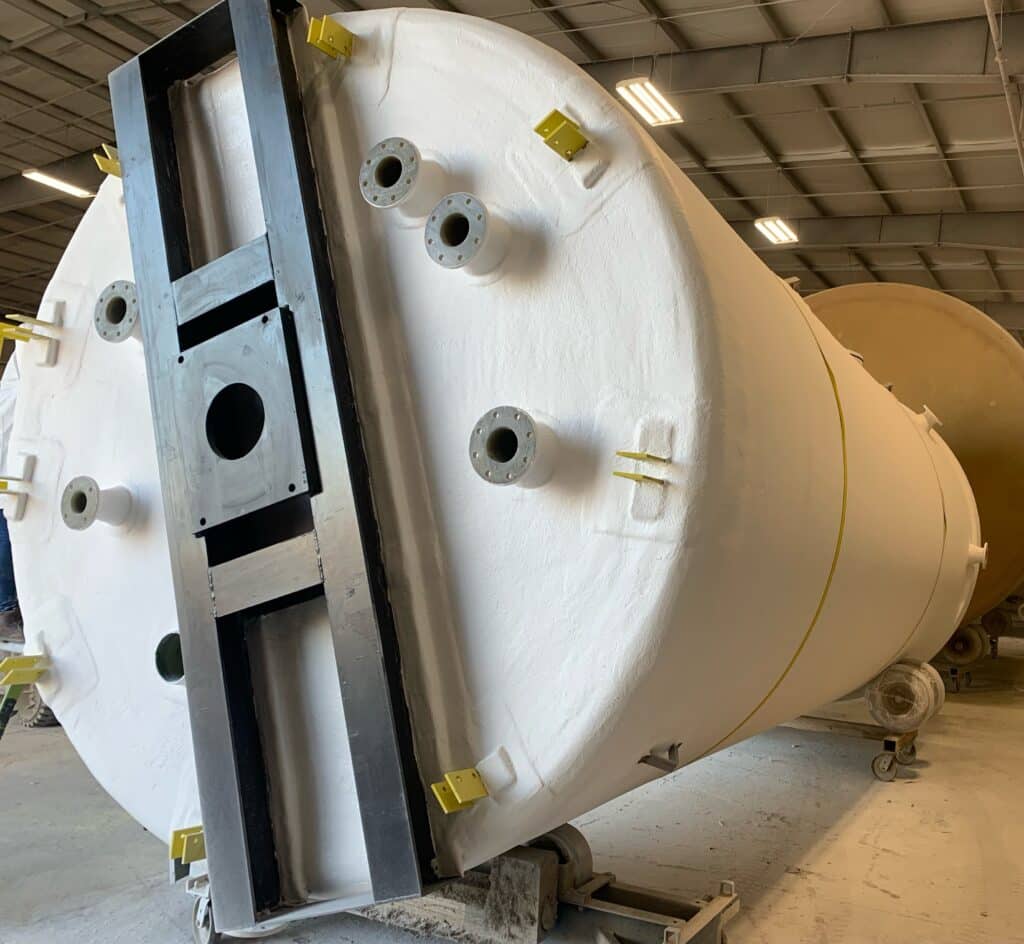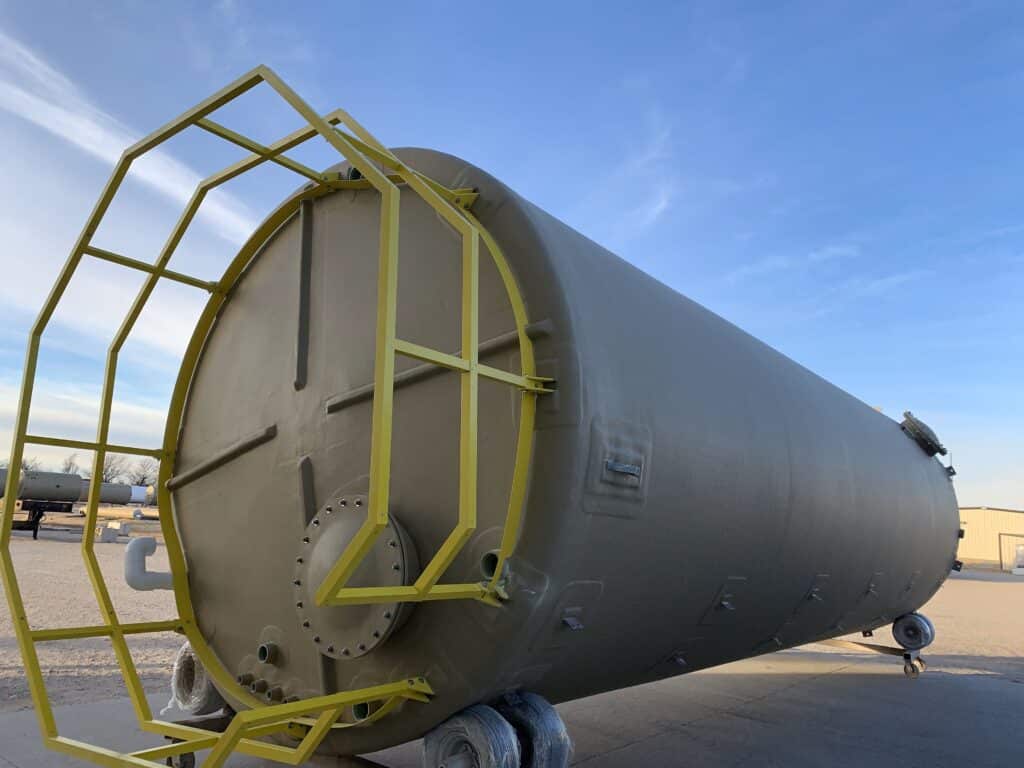Tanks for Biogas and Biomass Plants
KBK offers a custom line of tanks used in Biogas and Biomass plants.
These include:
- Digesters
- Reactors
- Hydrolysis Tanks
- Hydro Cyclone Batch Tanks
- Process Water Tanks
- Wastewater Tanks
- Leachate Tanks
- Effluent Tanks
- Sludge Tanks
Key Options Include:
- Manufactured from Carbon Steel, Fiberglass or Stainless-Steel
- Sized up 18’ x 58’
- Cone Bottoms
- Mechanical Hydraulic Mixing w/ Pump
- Top and Sidewall Mixers with custom mixing beams
- Heater Panels and Immersion Heaters
- Gas Tight Tanks
- Insulation to maintain temperature

Biogas and Biomass Tanks
Biogas and biomass plants are key components in the production of renewable energy. They both utilize organic materials as feedstock but function through different processes. Tanks manufactured by KBK play crucial roles in these processes, serving as reactors, storage, or treatment vessels. Here’s a breakdown of how both types of plants work and the role of tanks in each:
How Biogas Plants Work
- Feedstock Input: Biogas plants use organic waste materials such as agricultural waste, manure, municipal waste, plant material, sewage, green waste, or food waste.
- Anaerobic Digestion: The organic material is broken down by bacteria in an oxygen-free environment within a digester tank. This process produces biogas, primarily composed of methane and carbon dioxide, alongside other trace gases.
- Biogas Purification: The biogas can be purified or scrubbed to remove impurities and increase its methane content, making it suitable for energy production or to be fed into the gas grid.
- Energy Production: The purified biogas is then used to generate electricity and heat through combustion in gas engines, used directly for cooking and lighting, or processed into natural gas standards and used in vehicles.
Role of KBK Tanks in Biogas Plants
- Digesters: These are the main reactors where anaerobic digestion occurs. They must be sealed to prevent oxygen from entering and to allow for temperature control to optimize the bacteria’s activity. Larger facilities typically utilize concrete digesters but in smaller facilities, KBK insulated steel and fiberglass tanks are often used.
- Storage Tanks: After production, biogas can be stored in tanks until needed. These tanks need to be able to handle the pressure and composition of biogas.
- Leachate Tanks: Some plants include tanks for storing leachate, the liquid by-product of digestion, which can be treated or used as a fertilizer.
How Biomass Plants Work
- Feedstock Input: Biomass plants use organic materials like wood chips, agricultural waste, or other plant-based material as fuel.
- Combustion/Processing: The biomass is either directly combusted to generate heat and power or processed into biofuels such as biodiesel or ethanol.
- Energy Production: In combustion facilities, the heat generated is used to produce steam that drives turbines, generating electricity. In processing facilities, biomass is converted into liquid fuels that can be used for transport or heating.
Role of KBK Tanks in Biomass Plants
- Storage Tanks: Before processing, biomass can be stored in large tanks or silos, especially if the biomass is in liquid form or if the plant produces liquid biofuels.
- Process Tanks: These are used during the chemical processing of biomass into biofuels, where different reactions take place to convert the biomass into usable fuels.
- Effluent Tanks: Biomass processing can produce wastewater, which is stored in tanks before treatment or disposal
In summary, KBK’s tanks are essential for the operation of biogas and biomass plants, serving a variety of purposes from digestion and storage to treatment. Their design and construction must consider the specific requirements of the materials they hold, such as corrosion resistance, structural integrity under pressure, and, in the case of biogas, gas-tightness.
Biomass Plants
Biomass plants, which convert organic materials into energy, offer numerous benefits across environmental, economic, and social spectrums. These benefits align with the broader goals of sustainable development and renewable energy adoption. Here’s a detailed look at the advantages of biomass plants:
Environmental Benefits
Renewable Energy Source
Reduction of Waste
Carbon Neutral Potential
Improved Air Quality
Economic Benefits
Energy Independence
Local Economic Development
Diverse Products
Social Benefits
Rural Development
Employment Opportunities
Energy Access
Technological and Scientific Benefits
Innovation and Advancement
Versatility
Biogas plants offer a multitude of environmental, economic, and social benefits. By converting organic waste into energy, they contribute to renewable energy development, waste management, and even agricultural improvement. Here’s a detailed look at the benefits of a biogas plant:
Biogas Plants
Biogas plants offer a multitude of environmental, economic, and social benefits. By converting organic waste into energy, they contribute to renewable energy development, waste management, and even agricultural improvement. Here’s a detailed look at the benefits of a biogas plant:
Environmental Benefits
Waste Reduction
Renewable Energy Production
Nutrient Recycling
Carbon Sequestration
Economic Benefits
Energy Savings
Revenue Generation
Job Creation
Social Benefits
Improved Sanitation
Energy Independence
Agricultural Development
Technological and Scientific Benefits
Innovation and Research
Flexibility in Feedstock
Overall, biogas plants represent a multifaceted solution to several pressing issues, including waste management, renewable energy production, and agricultural sustainability. They exemplify a circular economic approach, where waste is transformed into valuable resources, benefiting both the environment and society.



Hydrolysis Tanks
A KBK hydrolysis tank is a crucial component in the process of anaerobic digestion, especially in biogas plants. It is designed for the hydrolysis stage, which is one of the initial steps in the breakdown of complex organic materials into simpler compounds that can be more easily digested by microorganisms to produce biogas.
How It Works
Initial Breakdown
Preparation for Methanogenesis
Importance in Biogas Production
Efficiency
Handling Complex Substrates
Design Considerations
Temperature
pH Levels
Retention Time
Hydrolysis tanks are essential for maximizing the efficiency and throughput of biogas plants, especially those dealing with more complex or varied feedstocks. By optimizing the hydrolysis step, these plants can significantly improve the overall yield and effectiveness of biogas production.
KBK Hydrolysis Cone Bottom Tanks are heated and utilize mixing technology.
